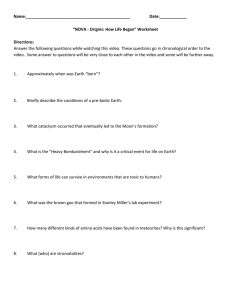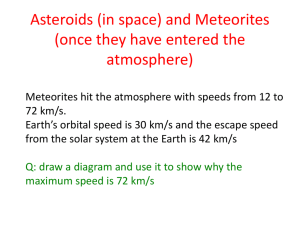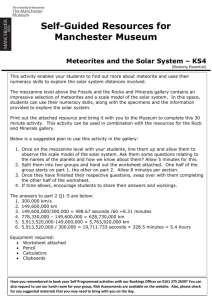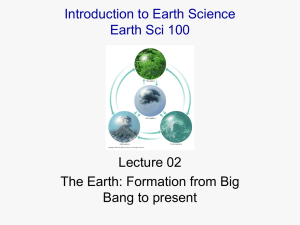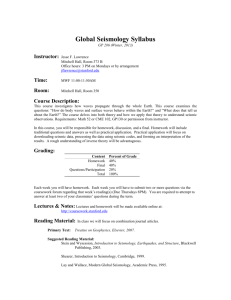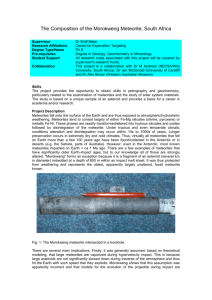How do we know about the Earth
advertisement
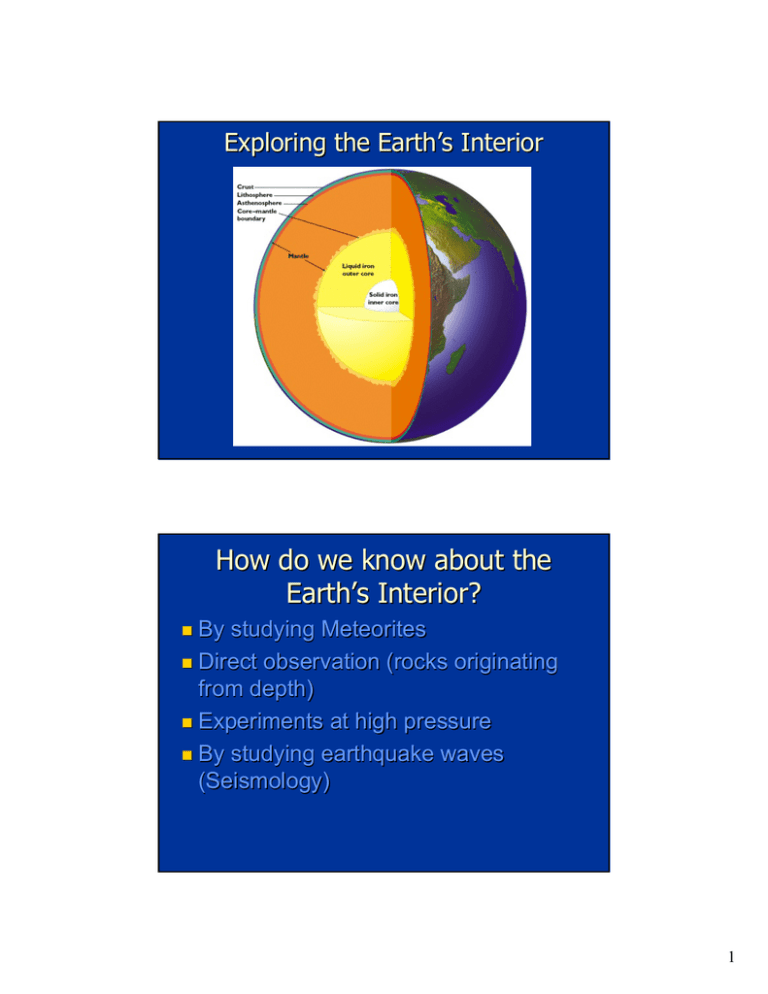
Exploring the Earth’s Interior How do we know about the Earth’s Interior? By studying Meteorites Direct observation (rocks originating from depth) Experiments at high pressure By studying earthquake waves (Seismology) 1 Meteorites have struck the Earth in the past. Many are probably pieces of proto-planets similar in composition to Earth. Meteorites Accumulate Daily 2 Meteorites Stony meteorites are rich in olivine and pyroxene Similar to Earth’s lithosphere Meteorites Iron meteorites are made of iron and nickel Earth’s interior (core) is similar 3 Types of Meteorites - I Stones Primarily silicates (like Earth’s crust and mantle) >90% of all meteorites Irons Iron-nickel alloys Stony irons Combination of stony and iron meteorites Types of Meteorites - I 4 Types of Meteorites - II Falls Meteorites observed falling to the ground Primarily stones (suggests they are more common) Finds Meteorites discovered on the ground Primarily irons (collected because they are unusual looking) How do we know about the Earth’s Interior? By studying Meteorites Direct observation (rocks originating from depth) Experiments at high pressure By studying earthquake waves (Seismology) 5 Large Volcanic Eruptions Voluminous volcanic eruptions Sample significant part of mantle Can infer something about mantle composition Kimberlites Rapidly injected rock Volatile-rich Often contain diamonds Known to form at high pressure - deep in mantle (>400 km) Hosted by mantle rock 6 Kimberlites Kimberlites Sample Mantle Peridotite 7 How do we know about the Earth’s Interior? By studying Meteorites Direct observation (rocks originating from depth) Experiments at high pressure By studying earthquake waves (Seismology) Diamond-anvil cell 8 Diamond-anvil cell Multi-anvil Press 9 Multi-anvil Press Seismology Study of the propagation of mechanical energy released by earthquakes. When energy is released, waves of motion (like the effect of a pebble tossed into a pond) are set up in the Earth. 10 Structure of the Earth Seismic velocity (how fast earthquake waves travel through rocks) depends on the composition of material and pressure. We can use the behavior of seismic waves to tell us about the interior of the Earth. Types of Seismic Waves 11 Changes in P- and S- wave Velocity Reveal Earth’s Internal Layers Velocities generally increase in each layer Refraction Refraction and Reflection of a Beam of Light Reflection 12 Refraction and reflection of seismic body waves P-and S-wave Pathways Through Earth 13 Travel paths for shallow seismic waves P-wave Shadow Zone 14 S-wave Shadow Zone S wave shadow zone P wave shadow zone 15 Seismology and Earth structure 16 Layers of the Earth Earth’s CORE Outer Core - Liquid Fe, ~2200 km thick, No S-waves transmitted -> S-& P-wave Shadow Zones Inner Core - solid Fe (some Ni, Co, S, C), ~2500 km thick How do we know? Meteorites, Seismology, Magnetic field 17 Earth’s Geodynamo 18 Origin of Earth’s magnetic field: the geodynamo The basic idea: an electric motor is a dynamo Motion of the liquid outer core -- a conductor -in a magnetic field generates current The current generates a stronger magnetic field 19 Origin of Earth’s magnetic field: the geodynamo Modeled Geodynamo 20 Mantle Tomography Uses numerous seismic data Uses small changes in speed of seismic waves Faster wave motion may correspond to denser or colder regions Slower wave motion may correspond to buoyant or warmer regions Basics of Tomography 21 Tomography of the Mantle 22 Tomography Beneath Active Volcanoes 23
